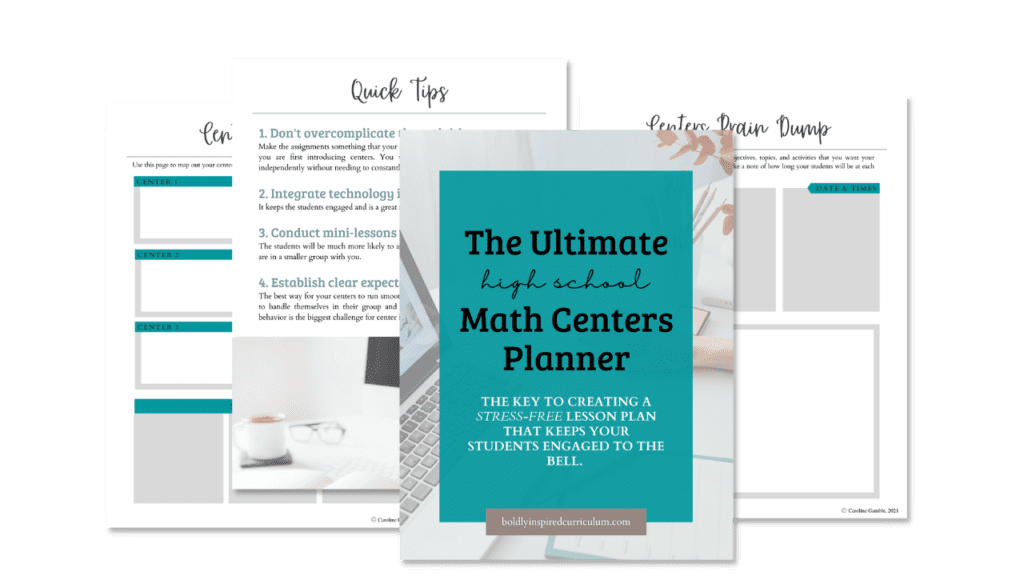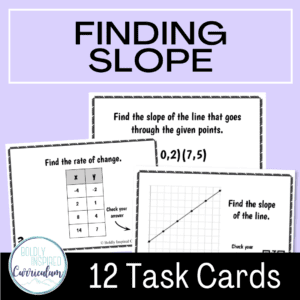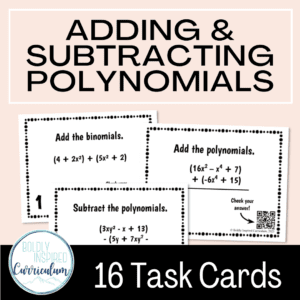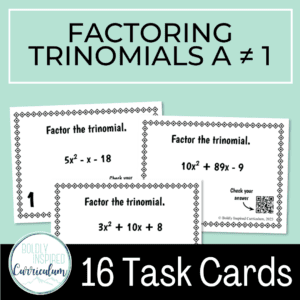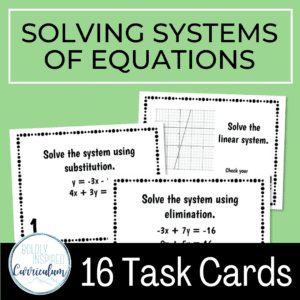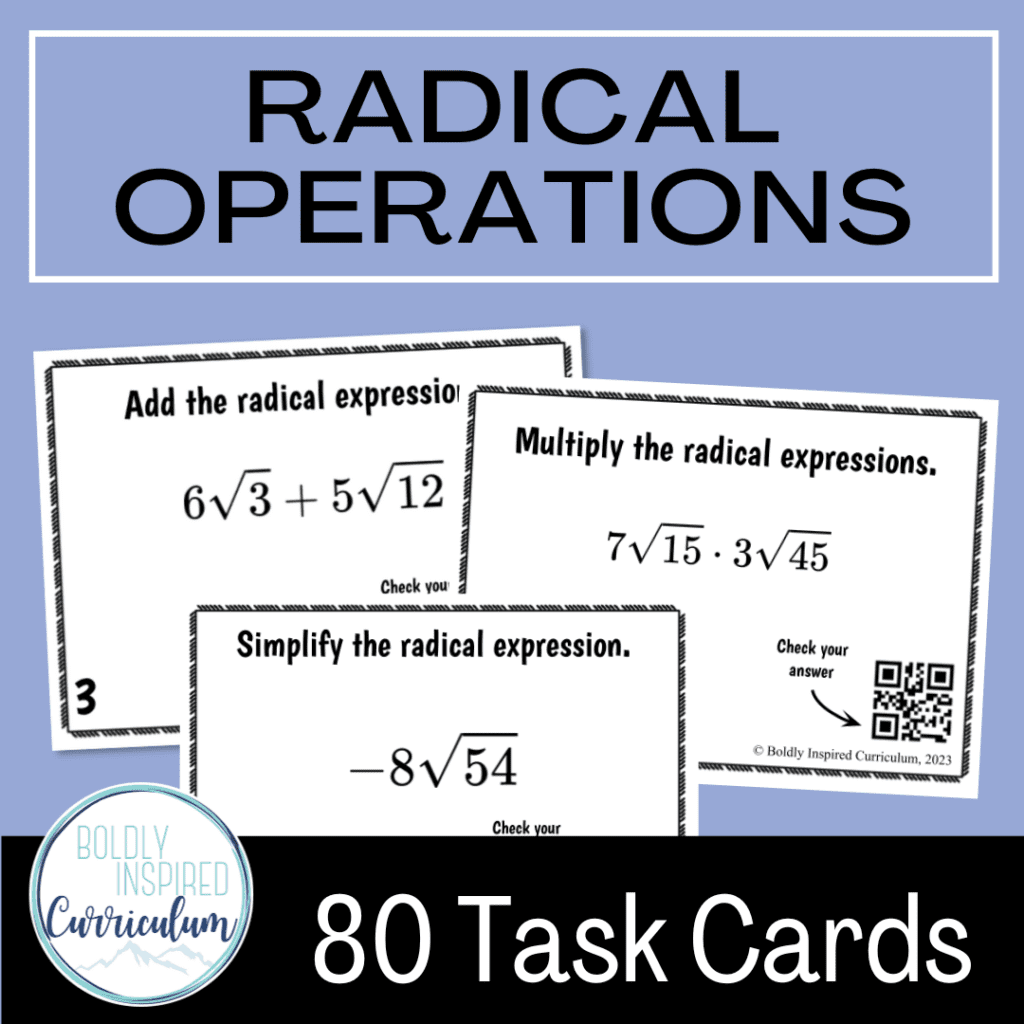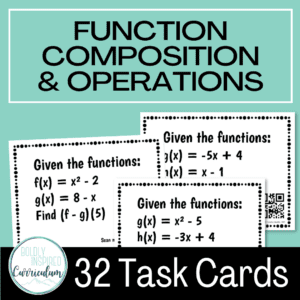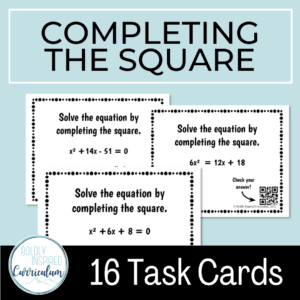Task cards in math class are a great way to change up your regular routine and get kids moving around the room!
They are perfect for independent or small group work because they have QR codes making them completely self-checking. You’ll be able to pull small groups of students or work one-on-one while the rest of your class is completing task cards (and not pestering you the whole period!).
Task cards can be used for so much more than just stations. In this post, I’ll be giving you five other ways that you can use task cards in your middle or high school math classroom!
Table of Contents
ToggleLooking for more high school math activities? Check out these blog posts ↓
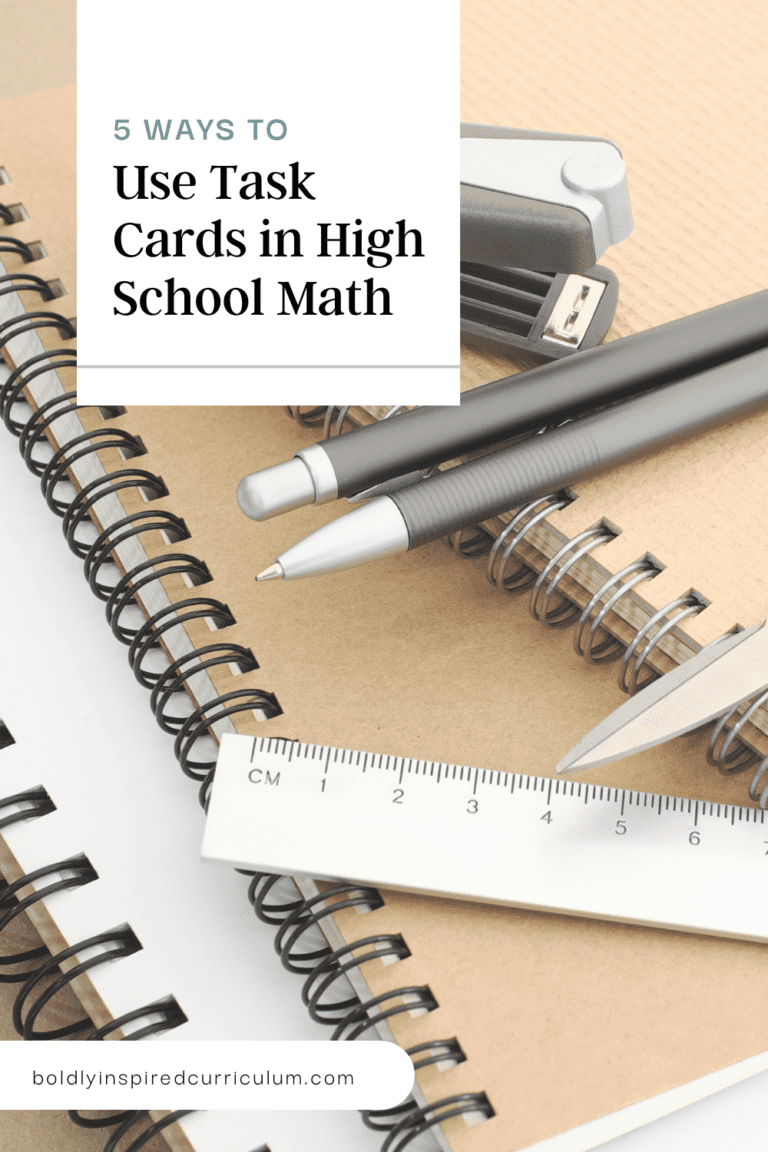
Math Centers
When your students are in small groups, give them 10 – 15 task cards and the answer sheet. There are multiple ways that you can structure how your students complete the task cards.
- Have your students work together to complete one problem, then move onto the next.
- Have each student in the group work on one problem independently, then rotate the cards.
Either way, they will complete as many task cards as they can in the time that they are given. They are also able to check their work on their own and problem solve with their classmates.
PRE-ALGEBRA TASK CARD FAVORITES
Whole Group
One of my all time favorite lessons is presenting a series of problems to my students and having them solve them on individual whiteboards.
The best part about this lesson is it’s completely NO PREP! All you need to do is grab a stack of task cards for a topic that you are reviewing, have students pass out whiteboards, and you’re ready to go!
Your students will be more engaged because everybody loves writing on whiteboards and everyone is participating.
ALGEBRA 1 TASK CARD FAVORITES
Mix and Match
This is a great strategy for reviewing for a unit test of final exam. You can take a bunch of different task card sets and pull a handful from each. This will get your students practicing different topics within one unit or semester without assigning 50 different problems.
Let me give you an example:
This task card bundle contains adding, subtracting, multiplying, dividing, and rationalizing radical expressions. The week of the radical operations unit test, I decided to mix and match these task cards choosing a few from each topic.
Using this method, my students were getting plenty of practice of all the skills without having to complete all 80 problems.
Small Group
Task cards are the perfect resource for pulling small groups of students who need extra practice with a certain topic. This is similar to the whole group whiteboard lesson.
With small groups, you are able to give your students more direct feedback because there are only a few of them. You’re also able to watch their thought process and see where they may be making mistakes.
ALGEBRA 2 TASK CARD FAVORITES
Google Slides
Add your individual task cards to Google Slides to mimic Boom Cards (but on a budget 😉).
This is a great alternative to stations around the room for an extra rowdy class of teenagers. Some classes just can’t handle getting out of their seats and need this kind of structure.
With Google Slides, you can still use the resources you have, but it changes things up from a basic worksheet.
Ready to add math centers to your high school classroom? Check out this free guide ↓
